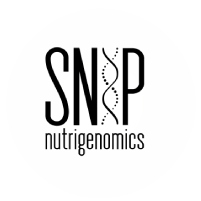Today, we will explore a glimpse of the wonderful world of methylation and what can happen when it gets out of balance.
Methylation is much more complicated than “I have an MTHFR mutation.” It is an intricate balance of many SNPs and their functions, and correcting it with nutrigenomics can be a delicate process.
SNiP is here to help navigate the process.
In today’s article, we will discuss what happens when the body gets zealous and goes into hyperdrive with methylation, as well as what can be done to unlock your body’s “golden zone” of methylation.
The Lock and Key of Methylation
Imagine your body’s methylation process as a complex lock mechanism in a grand door, responsible for maintaining the balance of numerous biological functions. Overmethylation occurs when too many keys (methyl groups) try to fit into this lock, disrupting the delicate equilibrium.
In this analogy, methylation is the lock, and methyl groups are the keys. The perfect fit of keys into the lock ensures the smooth functioning of critical processes like mood regulation, neurotransmitter production, detoxification capacity, energy production, muscle repair, and gene expression.
Overmethylation happens when there are excessive keys, leading to an imbalance in these processes.
Warning signs of Overmethylation
When the methylation lock is overwhelmed with keys, various symptoms can manifest, indicating an imbalance. These may include:
- Anxiety, panic attacks, and depression are akin to a lock jammed with too many keys.
- Sleep disorders and low libido, as if the lock is unable to turn smoothly.
- Food and chemical sensitivities and histamine intolerance show the lock’s over-sensitivity to certain key types.
- High pain threshold, suggesting a desensitized lock mechanism.
Understanding the Causes
The main cause of overmethylation can be likened to producing too many keys due to genetic factors like methyltransferase (MTHFR) and CBS genetic mutations and impaired creatine synthesis.
These genetic variations can cause the body’s methylation lock mechanism to behave erratically.
It can also be an overcorrection when the body finally gets key nutrients it has been deficient in.
This is why starting any new diet or supplement routine by going “low and going slow ” is critical, especially if you have some key SNP mutations.
It’s important to consider that other factors like diet, stress, and gut health can influence the lock’s responsiveness.
Recognizing Overmethylation:
Diagnosing overmethylation is done through blood work with your health care provider. One must assess the number and type of keys in the system, typically done by testing whole blood histamine levels. Low levels suggest an excess of methyl groups.
At SNIP Nutrition, we test for specific gene variants, such as AHCY, CBS, FUT2, MTHFR, COMT, MTR, MTRR, and VDR, which are key players in the methylation process. Variants in these genes can alter enzyme efficiency and affect how well your body handles methylation, potentially leading to an imbalance. By understanding your unique genetic makeup through our testing, we can provide more personalized dietary and lifestyle recommendations to manage or mitigate the effects of overmethylation.
Finding the Golden Zone of Methylation
The goal is to balance the number of keys with the lock’s capacity, bringing it to the ‘golden zone’ where methylation functions optimally.
This involves supporting your diet with key methylation-supporting nutrients such as folate, niacinamide (B3), omega-3 fatty acids, and vitamins B6, C, E, and Zinc.
Whole foods are a great way to get these nutrients in.
Folate
Folate, also known as vitamin B9, is essential for the body’s DNA synthesis, repair, and methylation processes. Pregnant women need to support fetal development. Here are some folate-rich foods:
- Leafy Green Vegetables: Spinach, kale, collard greens, and Swiss chard are excellent sources of folate.
- Legumes: Lentils, black beans, pinto beans, and chickpeas contain significant amounts of folate.
- Asparagus: This vegetable is not only high in folate but also in other essential nutrients.
- Eggs: They provide a decent amount of folate and other B vitamins.
- Beets: Beets are a good source of folate and help improve blood flow and lower blood pressure.
- Citrus Fruits: Oranges, lemons, limes, and grapefruit contain folate and are also high in vitamin C.
- Brassica family: These are rich in folate and contain high vitamin K and fiber levels.
- Nuts and Seeds: Walnuts, almonds, sunflower seeds, and flaxseeds contain folate and healthy fats.
- Avocado: It’s a good source of healthy fats and provides folate.
- Papaya and Bananas: These fruits are tasty and offer good folate.
Avoiding folic acid-enriched foods is critical as they compete with folate on the receptor sites.
Vitamin B3
Vitamin B3, also known as niacin, is an important nutrient that plays a role in many bodily functions, including converting food into energy, maintaining skin health, and supporting nervous system function. Here are some foods rich in vitamin B3:
- Meat and Poultry: Chicken breast, turkey, beef, and liver are excellent sources of niacin.
- Fish: Tuna, salmon, and anchovies are high in niacin and provide omega-3 fatty acids.
- Peanuts: A great snack option, peanuts are a good source of niacin and provide healthy fats and protein.
- Legumes: Lentils, peas, and beans like kidney beans and chickpeas contain niacin.
- Whole Grains: Brown rice, barley, and whole wheat products are good sources of niacin and fiber.
- Mushrooms: Portobello and button mushrooms are particularly rich in niacin.
- Green Peas: These are a good plant-based source of niacin and provide other nutrients like vitamins A, C, and K.
- Sunflower Seeds: A snack high in niacin and provides vitamin E and healthy fats.
- Avocado: This fruit is a source of healthy fats and contains niacin.
- Potatoes: Both white and sweet potatoes provide niacin and other nutrients like potassium and vitamin C.
Omega-3 fatty acid
Omega-3 fatty acids are essential fats crucial to brain function and overall health. They are particularly known for their anti-inflammatory properties. Here are some foods rich in omega-3 fatty acids:
- Fatty Fish: Salmon, mackerel, sardines, herring, and anchovies are excellent sources of EPA and DHA, two key omega-3 fatty acids.
- Chia Seeds: These tiny seeds are high in omega-3s, fiber, and protein.
- Flaxseeds and Flaxseed Oil: Rich in ALA (alpha-linolenic acid), another type of omega-3.
- Walnuts: A great plant-based source of omega-3s, walnuts are also rich in antioxidants and healthy fats.
- Hemp Seeds: Contain a good balance of omega-3 and omega-6 fatty acids.
- Algal Oil: A plant-based source of DHA and EPA derived from algae, making it suitable for vegetarians and vegans.
- Eggs (especially Omega-3 enriched): Eggs from chickens fed with omega-3 enriched feed have higher levels of these fatty acids.
- Grass-fed beef: Contains more omega-3s compared to grain-fed beef.
- Soybeans and Soy Products: Tofu and edamame are among the few non-fish sources of EPA and DHA.
- Seaweed and Algae: Important sources of omega-3 for people on a vegetarian or vegan diet.
- Krill Oil: Similar to fish oil, krill oil is rich in EPA and DHA.
Vitamin B6
Vitamin B6, also known as pyridoxine, is essential for brain development and function, and it helps the body make the hormones serotonin and norepinephrine, which influence mood, and melatonin, which helps regulate the body clock. Here are the top foods rich in vitamin B6:
- Chickpeas (Garbanzo Beans): A standout source of vitamin B6. A cup of cooked chickpeas can provide more than half the recommended daily value.
- Beef Liver: Organ meats are highly nutritious, and beef liver is particularly high in vitamin B6. It’s also rich in other nutrients like vitamin A and iron.
- Salmon: This popular fatty fish is high in heart-healthy omega-3 fatty acids and an excellent source of vitamin B6.
- Chicken Breast: Particularly when cooked and skinless, chicken breast is a great source of vitamin B6 and is also low in fat and high in protein
Zinc
Zinc is an essential mineral important for immune function, wound healing, DNA synthesis, and cell division. Here are the top five foods rich in zinc:
- Oysters: Oysters are the richest source of zinc. Just a few oysters can provide the daily recommended intake of zinc.
- Beef: Lean cuts and beef liver are particularly high in zinc. They also provide other important nutrients like iron and vitamin B12.
- Pumpkin Seeds: A great plant-based source of zinc, pumpkin seeds are also high in magnesium and other minerals.
- Lentils: Lentils are not only a good source of zinc but also provide fiber, protein, and other key nutrients, making them an excellent choice for vegetarians and vegans.
- Cashews: These nuts are a convenient snack that’s high in zinc, as well as other minerals like magnesium and iron.
Vitamin E
Vitamin E is a fat-soluble antioxidant that protects the skin from oxidative stress and maintains immune function. Here are the top five foods rich in vitamin E:
- Sunflower Seeds: A great source of vitamin E, sunflower seeds also offer healthy fats, protein, and fiber. They can be enjoyed as a snack or sprinkled on salads.
- Almonds: Almonds are high in vitamin E and provide healthy fats, protein, and fiber. They can be eaten raw, roasted, or as almond butter.
- Spinach: This leafy green vegetable is a good plant-based source of vitamin E, as well as iron, calcium, and fiber.
- Avocados: Rich in vitamin E, avocados are also a good source of monounsaturated fats, which are beneficial for heart health.
- Extra Virgin Olive Oil: A staple of the Mediterranean diet, extra virgin olive oil is a good source of vitamin E and beneficial monounsaturated fats.
Eating should be pleasurable. Choose foods you would like to eat from the above; don’t force yourself to eat something because it is nutrient-dense while you hate it. We always recommend rotating foods that are in season, if possible, grown organically and locally.
In addition:
- Avoid excess methyl group supplements like Methionine, Sam-e, and TMG. If you need these nutrients due to your genetic makeup, start low and work slowly to the therapeutic dose that does not cause overmethylation symptoms. Listen to the wisdom of your body.
- Focus on a diet rich in B vitamins to support the lock’s proper functioning.
Just as a lock requires the right key for seamless operation, our body’s methylation process needs a balanced number of methyl groups. Identifying and addressing overmethylation is a step towards finding each individual’s golden zone of methylation, ensuring that the biological lock and key mechanism function harmoniously for optimal health and well-being.
Unlocking Optimal Health with the C.O.D.E. Complex
C.O.D.E. Complex is a revolutionary approach to personalized health and wellness, tailored to help you find your “Golden Zone” of metabolic balance. At SNiP Nutrition, our C.O.D.E. Complex supplement is designed based on your unique genetic profile, addressing specific needs related to overmethylation and other metabolic challenges.
By integrating cutting-edge genetic testing with tailored nutritional formulations, our products ensure you receive the precise nutrients your body requires to manage methylation processes efficiently. This tailored approach helps mitigate the risks associated with genetic variants in methylation pathways, making C.O.D.E. Complex the ideal solution for anyone seeking to optimize their health and well-being through personalized supplementation.
Genes are not your destiny
What you do with the information you have about your genes is key.
Join SNiP today and discover your own simple, science-driven roadmap to optimal health, including what your body needs for healthy methylation.
Know what your genetics reveal about your Methylation pathways and the nutrients YOUR BODY needs to do it well.
The SNiP solution combines actionable genetic insights, precision nutrigenomics, and personalized lifestyle recommendations to relieve your wellness journey’s stress.
No research, no guesswork, no PhD required.
We do the heavy lifting, so you don’t have to.
The first step?
Test with our (no-stress!) home-based kit.
Order yours today, and let SNiP show you a path to smooth sailing.
Test today and unlock your unique DNA-based nutritional formulation.
Developed to support your body (where your body says it needs it).


